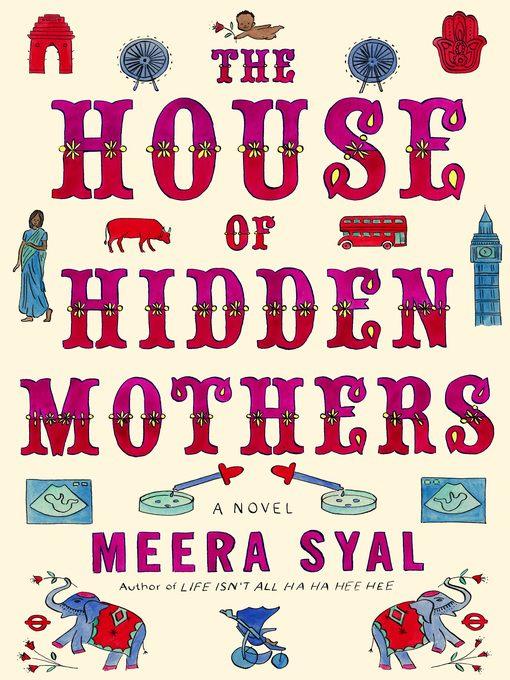
The House of Hidden Mothers
A Novel
کتاب های مرتبط
- اطلاعات
- نقد و بررسی
- دیدگاه کاربران
نقد و بررسی

April 25, 2016
Syal (Life Isn’t All Ha Ha Hee Hee) tackles family drama and the new India in one fell swoop. Second-generation British Indian Shyama never really imagined she’d have another child after her first marriage ended in divorce. But now the 48-year-old salon owner and her much-younger boyfriend, Toby, are fixated on having a baby, much to the annoyance of Shyama’s college-aged daughter, Tara. When IVF treatments fail, the couple turns to surrogacy, an option that is much more affordable in India than elsewhere in the world. But Toby and Shyama’s pursuit of parenthood is complicated not only by Tara’s personal crises and the latest chapter in Shyama’s parents’ Dickensian legal battles over New Delhi real estate, but also by their ethically nebulous personal involvement with the surrogate mother, Mala. Narrated primarily from Shyama’s point of view, with occasional glimpses into other characters’ outlooks, this ambitious novel offers some interesting insights into India’s changing social climate, particularly its intersections with class and gender. But in trying to be a romance, an intergenerational saga, and political novel, it outreaches its grasp. Agent: Georgia Garrett, Rogers, Coleridge & White.

April 1, 2016
A woman longing for a child jumps headlong into the dramatic world of international surrogacy in Syal's third novel (Life Isn't All Ha Ha Hee Hee, 2000, etc.). Shyama, a 48-year-old British Indian divorcee, lives in London close to her aging immigrant parents, Prem and Sita, and her 19-year old daughter, Tara. After a series of unsuccessful fertility treatments with Toby, her 34-year-old partner, Shyama decides to bypass her "inhospitable womb" by hiring a surrogate mother in India, where the process is unregulated and cheap. Despite the reservations of her daughter and parents and Toby's ambivalence about having a child, Shyama and Toby make the journey to Delhi to find a surrogate through a clinic specializing in assisted reproductive technology. There they meet Mala, a young married woman eager to escape her limited circumstances. As Mala begins her pregnancy on behalf of Shyama and Toby, they become entangled in each others' lives in unexpected and inadvisable ways, turning what begins as a simple matter of supply and demand into something far more complicated. Alongside this drama, Prem and Sita's struggles with a property in India and Tara's increasing alienation and loneliness are woven together to create a multitextured story of desires, disappointments, and family bonds. The novel inhabits many points of view, including Shyama's, Toby's, Mala's, and Tara's, as well as those of more minor characters. These varying perspectives mostly add interest to the narrative, but at times, they feel redundant and unnecessary, a forgivable flaw, since Syal so skillfully uses this bicultural cast of characters to explore the dramatic complexities of transnational surrogacy. The many themes of this novel, including generational conflicts, cultural myopia, economic privilege, and gender politics, give readers plenty to think about. Somewhat overpopulated with characters and issues, but ultimately this hefty novel is a well-paced, enjoyable read.
COPYRIGHT(2016) Kirkus Reviews, ALL RIGHTS RESERVED.

May 1, 2016
In this emotion-stirring, multicultural, feminist novel, 48-year-old Indian American Shyama faces the realities of surrogate pregnancy when she and her younger lover decide to pursue this route of procreation, a way to bring forth a child and "help" (financially) a poor woman. Shyama's Indian parents are facing an ongoing real-estate struggle against the corruption of the Indian government, and her teenage daughter goes to India to join the civil rights movement. The current state of India's society is the backdrop to their personal dramas. Syal (Life Isn't All Ha Ha Hee Hee) depicts the harmful sexism that is ingrained in Indian culture and offers a panorama of diverse views: Western vs. Eastern; rich vs. poor; strong feminists vs. passive traditionalists; men who range from sexist to feminist. VERDICT With an absorbing modern family saga story line and sympathetic, compelling characters, Syal's novel trains a personal lens on ethical issues surrounding surrogacy and women's rights. An excellent book club choice. [See Prepub Alert, 11/30/15.]--Sonia Reppe, Stickney-Forest View P.L., IL
Copyright 2016 Library Journal, LLC Used with permission.

April 15, 2016
Shyama lives in a busy, multigenerational household with her Indian parents, Prem and Sita, and her daughter from her first marriage, Tara. The divorce was years ago, but Shyama is finally happy, having found love again with her much-younger boyfriend, Toby, with whom she now desperately wants a child. Being nearly 50, Shyama convinces Toby they should use a surrogacy clinic in India, and cultures collide when they unexpectedly bring Mala, their surrogate, back to London with them. Much like Zadie Smith's White Teeth (2000), Syal's novel takes an expansive look at cultural heritage, generation gaps, caste, class, and family. A few subplots fill out the intricacies of the immigrant experience: for example, Shyama's parents fight a decades-long battle to recover their property in India, where their relatives have been squattinga common problem for Indian expats. Women's rights play a formidable role as well when Tara, after facing sexual assault, gets involved in a women's advocacy group in India. Despite a puzzling plot twist at the end, The House of Hidden Mothers offers many fascinating themes and momentsperfect for discussion groups.(Reprinted with permission of Booklist, copyright 2016, American Library Association.)

























دیدگاه کاربران